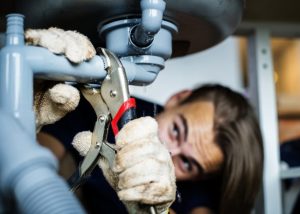Exposing Hidden Water Line Leaks: 6 Effective Finding Tricks
Exposing Hidden Water Line Leaks: 6 Effective Finding Tricks
Blog Article
How do you feel about Top leak detection hacks?

Early detection of dripping water lines can reduce a possible catastrophe. Some tiny water leakages may not be visible.
1. Check Out the Water Meter
Every home has a water meter. Inspecting it is a guaranteed manner in which assists you find leakages. For beginners, switch off all the water sources. Make sure no one will purge, use the tap, shower, run the cleaning equipment or dishwashing machine. From there, go to the meter and watch if it will change. Given that no person is using it, there need to be no movements. That indicates a fast-moving leak if it relocates. Furthermore, if you detect no changes, wait an hour or two and also inspect back once more. This means you may have a slow-moving leak that could also be underground.
2. Examine Water Consumption
If you identify unexpected modifications, despite your intake being the exact same, it means that you have leaks in your plumbing system. An unexpected spike in your expense shows a fast-moving leak.
On the other hand, a steady boost each month, despite the very same habits, shows you have a sluggish leakage that's also slowly escalating. Call a plumber to completely check your residential or commercial property, specifically if you feel a cozy area on your flooring with piping underneath.
3. Do a Food Coloring Examination
When it comes to water intake, 30% comes from bathrooms. If the shade somehow infiltrates your dish throughout that time without flushing, there's a leak in between the tank as well as dish.
4. Asses Exterior Lines
Don't neglect to check your outside water lines also. Test spigots by connecting a yard hose. Ought to water leak out of the link, you have a loosened rubber gasket. Change this and guarantee all links are limited. It will aid obtain it properly checked out as well as maintained yearly if you've got a lawn sprinkler system. One little leakage can squander tons of water and surge your water expense.
5. Analyze the circumstance and also inspect
Homeowners must make it a habit to check under the sink counters and even inside closets for any bad odor or mold development. These two warnings show a leakage so prompt attention is required. Doing routine assessments, also bi-annually, can conserve you from a significant trouble.
Extra importantly, if you know your home is currently old, maintain a watchful eye on your heating systems, tubes, pipelines etc. Check for stainings and weakening as the majority of pipes as well as home appliances have a life span. They will also normally deteriorate as a result of tear and also use. If you suspect leaking water lines in your plumbing system, do not wait for it to rise. Call an expert plumber today so you don't wind up with an awful mess in your house.
Early detection of leaking water lines can mitigate a potential calamity. Some little water leakages may not be visible. Checking it is a proven method that aids you find leaks. One little leakage can lose lots of water and increase your water costs.
If you suspect leaking water lines in your plumbing system, don't wait for it to rise.
WARNING SIGNS OF WATER LEAKAGE BEHIND THE WALL
PERSISTENT MUSTY ODORS
As water slowly drips from a leaky pipe inside the wall, flooring and sheetrock stay damp and develop an odor similar to wet cardboard. It generates a musty smell that can help you find hidden leaks.
MOLD IN UNUSUAL AREAS
Mold usually grows in wet areas like kitchens, baths and laundry rooms. If you spot the stuff on walls or baseboards in other rooms of the house, it’s a good indicator of undetected water leaks.
STAINS THAT GROW
When mold thrives around a leaky pipe, it sometimes takes hold on the inside surface of the affected wall. A growing stain on otherwise clean sheetrock is often your sign of a hidden plumbing problem.
PEELING OR BUBBLING WALLPAPER / PAINT
This clue is easy to miss in rooms that don’t get much use. When you see wallpaper separating along seams or paint bubbling or flaking off the wall, blame sheetrock that stays wet because of an undetected leak.
BUCKLED CEILINGS AND STAINED FLOORS
If ceilings or floors in bathrooms, kitchens or laundry areas develop structural problems, don’t rule out constant damp inside the walls. Wet sheetrock can affect adjacent framing, flooring and ceilings.
https://www.servicemasterbyzaba.com/blog/how-to-detect-water-leakage-in-walls/

As a keen reader about Detecting hidden plumbing leaks, I assumed sharing that excerpt was really helpful. So long as you liked our blog post kindly make sure you remember to pass it around. Thank you so much for taking the time to read it.
Get sorted, call! Report this page